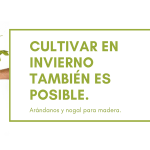Fusion of cork oak and holm oak
In this post we leave you all the information about our new creation: the fusion of cork oak and holm oak.
Why this fusion?
The traditional exploitation of the pastures presents, nowadays, serious problems that have direct consequences on their profitability.
In the first place, we find a low density in the dehesas since the average production in a dehesa of adult holm oaks is around 250Kgs per hectare with strong alternations (nurseries). In addition, naturally regenerated holm oaks take a minimum of 20 years to bear fruit regularly.
On the other hand, the disease known as “la seca”, produced by the Phytopthora fungus, kills the trees and spreads more and more.
Finally, the scarce and irregular productions as a consequence of the existence of very old masses, attack of diseases and very hard ecological and environmental conditions, constitute another of the most important problems.
Solutions
Our proposal is the development and implementation of intensive cultivation of holm oaks and other Mediterranean Quercus with trees selected for their high production. In this way, we would obtain new innovative crops with high production capacity, with interesting implications in terms of increased income for both the farmer and the livestock owner.
In short, we propose densification with the best adult plants from the pasture previously selected and propagated on clonal patterns resistant to Phytophtora.
Biotechnological process
1. Propagation of patterns selected for their vigour and disease tolerance
2. Selection of productive varieties: creation of mother-foot fields
3. Grafting: the productive varieties are grafted onto selected rootstocks to obtain plants that enter into production quickly.
4. Intensive implantation of holm oaks for acorn production: plants available for intensive cultivation and for densification on farms. Rapid entry into production with our own materials.
This is an intensive acorn crop capable of producing acorns in 5 years, producing 7,000/8,000 kg of acorn per year.





